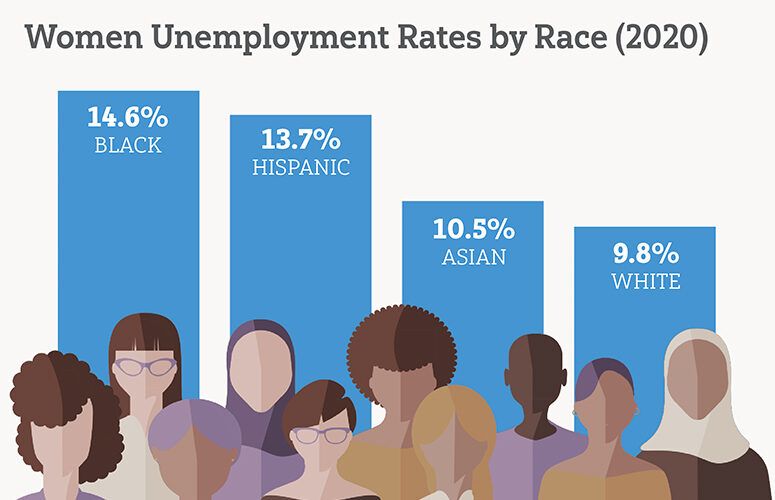
On Women and Business Leadership
Exploring the evolution of successful leadership in today’s ever-complex business world.
By George N. Saliba, Managing Editor On Aug 29, 2016Many of the fundamental questions surrounding women and business leadership engender passionate debate among both women and men, and a vast array of opinions reveals that what may be “correct” to an expert with an analysis may be incomprehensible – or, at the very least – viewed as “incorrect” by another.
The fact remains that only 4.6 percent of S&P and Fortune 500 companies are led by women. Why is this so? Some believe that women decline corporate leadership positions because they seek a greater balance between their careers and personal lives, and therefore shun the time-intensive demands of the C-Suite. Others flatly reject this notion. Among an array of other, potential female-leadership-dearth-cause controversies, some argue that because of documented, historical societal workplace discrimination and/or past “norms,” fewer women embarked upon business careers, decades ago. Therefore, they assert that there are now not enough potential female leaders with the experience necessary to operate major corporations. Others dismiss this notion as well.
From a historical perspective, women were not permitted to vote in all of our nation’s states until 1920, and via a long saga, our country today continues to explore a range of gender-related, equality-centric issues. Moreover, while an expanded, panoramic world history view proves that women can achieve the highest levels of expertise, accomplishment and leadership in any given endeavor, it also reveals that both women and men have almost always been affected – directly or indirectly, consciously or unconsciously – by the societies in which they lived.
On the following pages, New Jersey Business magazine examines women business leadership in the United States today, and simultaneously approaches several topical issues women may encounter in their professional ascensions.
Increasing the Number of Female CEOs
Mike Fucci is chairman of the board of Deloitte LLP (one of the world’s largest international accounting firms), and also is a sponsoring executive for the US 30% Club, an organization focused on gender balance in the boardroom. On the topic of why there are so few women when compared to men at the board / CEO level of major corporations, he tells New Jersey Business, “The concept of ‘not enough qualified female candidates’ is, quite frankly, an organizational excuse for not making diversity a priority.”
He adds, “We are at a point in time, right now, when business is changing. With the advent of technology, and [its effect on] day-to-day business, what it [used to take] people to become CEOs and board members was traditional: They rose up the ranks as CFOs, or to the management of a business.
“However, if we look at the next 10 years, I actually think what boards need – and this is what I, in my role as chairman, look for – is: New skills. That means people who have the ability to think around the corner [regarding] where business is [heading]. When you look at cybersecurity, human resources, or technology – these are all new areas.
“Even [the] largest boards out there [have] people [who] have been on the board for 12 to 15 years; they may be a little bit older; they don’t have skills with cyber technology – the skills that new boards must have.
“This is a perfect time to look within your organization for female candidates who absolutely have those skills, or who are nurturing them. If I keep going back to organizations that say there are not enough qualified female candidates, it really is – again – an excuse.”
Another Perspective
Offering a different perspective is Gail Mandel, president and CEO of Wyndham Destination Network, which is part of the Wyndham Worldwide family of companies: “My personal view [regarding why there are fewer women as compared to men at the C-Suite level] is that there are not enough women in the pipeline, at this point, even at the manager, director or vice president levels, to be considered. In my mind, I always go back to: What is the root cause? And the root cause is: What are we doing for women during those critical years when women are struggling with [life] decisions? It still is the case that, many times, women are the ones who are making the decisions as to whether or not to stay home to take care of their families – if they have young families – or, to continue working.”
She adds, “This whole work/life balance is such a personal choice. I went to [my superior, years ago], and we agreed that I would take on more limited responsibilities, for a period of time. I was given the flexibility by my manager, whereby [that person] re-allocated my workload. I was given more limited responsibilities, until I was ready to resume a more fulsome schedule, and then I was able to set myself up and continue on.
“I will tell you that I know that if I hadn’t been given that flexibility at that critical moment, I would not have continued in the workforce.”
She concludes, “I am especially proud of having the opportunity to be the first female CEO within our organization.”
Skills and Characteristics for Success
Mary Alice Williams is anchor at “NJTV News, with Mary Alice Williams,” and has a long and storied journalism career which includes, in part, being one of the key architects behind the design of CNN and overseeing the construction of CNN’s New York Bureau. Among other achievements, at a different network – NBC – she anchored “Sunday Today,” “NBC News Special Reports” and “Yesterday Today & Tomorrow.”
Williams will moderate a panel discussion this month at NJBIA’s Women Business Leadership Forum focused on whether there are any specific values, skills and/or characteristics women need to reach the C-Suite.
Williams tells New Jersey Business, “We already have [all the attributes]; it is a question of being given a shot. It takes the same skills that men have: A determination and drive to do it, a real focus, and an ability to manage many things at once. All those things are important, including an ability to ‘think bigger.’ There has to be a bigger thing than the ‘bottom line,’ because the bottom line is, at the end, a pretty dry answer or outcome. I suppose there are people who are driven by that bottom line solely, but I don’t know any of the great leaders who are [driven by that].”
She adds, “It is so hard for me to understand, but it is true that in the 21st century, women are still fighting misogyny – fundamental misogyny.” Williams asserts that diversity – and a commitment to it during the employment hiring process – is essential.
Meanwhile, Wyndham’s Gail Mandel sees a business world with a “gender gap perspective,” “fewer female role models” and “certain historical gender stereotypes.”
She says, “When I give advice to women who are trying to enter a male-dominated meeting or workplace, I give them a few pieces of advice: Know your material. The facts are your friends, and when you are going in to meet with someone – whether it is one-on-one or in a large group – again, make sure you know your material. Regardless of whether you are a man or a woman, if you are competent, you are going to be recognized. The second thing that is really important, especially for a woman, is to exude confidence. Stand up tall. Demonstrate that you are strong and that you deserve to be sitting at that table.
“The next thing is to be a great listener. Really make sure that you take a breath, listen to the content and the questions, and answer the questions that are being asked of you. Also, understand your audience; that is also part of being a good listener. What is the audience looking for? Then, it is really important – as important as the others [factors] – to be willing to take strategic risks.”
Regarding “strategic risks,” Mandel relates, as an example, that many years ago, her company was acquiring another company. She explains, “Because of the work I was doing as an internal auditor for our predecessor company, [I identified] that there was one area nobody was focused on: How this internal audit department from the company we were targeting would be integrated. … I brought a plan to my manager at the time, saying, ‘I don’t think anybody is focused on this, but, by the way, I think we are going to have some issues integrating.’ As a result of my taking that initiative, I was actually given responsibility for that department.”
Leading in an Entrepreneurial Environment
Perceptive and historic business leaders often assert that fundamentally successful entrepreneurs (both men and women) and/or companies may focus first on how their products or services will offer profound benefits for their customers. Against this backdrop, it can be argued that in terms of adding value for customers, BJ Dowlen – the founder and president of Bodyworks Enterprises, LLC (who will address the topic of “Leading in an Entrepreneurial Environment” at NJBIA’s Women Business Leaders Forum) – dwells in the “giving” arena, not only via her company’s physical-pain-alleviating product line, but through her ideals and values.
Dowlen tells New Jersey Business that she was “born with her legs backward” and was twice confined to a wheelchair. She explains, “The obsession with getting people out of pain started at a very young age, because I was born a little different. So, that was always a pursuit.”
Her ancestors include inventors who developed Space Shuttle components, pioneered the pencil-thin women’s high-heel shoe and developed housing during the Great Depression. Dowlen invented an award-winning spherical ball – one that, in simple terms – might be described as a therapeutic massage ball, used by world-famous athletes and the general public alike. Dowlen explains that she overcame obstacles not only manufacturing and marketing her products, but ensuring that they are made in the United States.
When describing the characteristics to achieve, grow and strive, she says, “Be relentless. Don’t take anything personally. I am not attached to the results, which makes being in business much easier. I [have] no problem approaching anyone, at any level, with a thought, idea or presentation, because I am not attached to their judgment of what that idea is. I find that a lot of people [have an] issue with holding back and not presenting, because if a person they are presenting to doesn’t like their idea, or dismisses them – which is common – then they crawl back into a shell and don’t present something else. That is a mistake many people encounter.
“As an entrepreneur, I can say – conservatively – that since I have started on this journey with this new business, I have been rejected at least 4,000 times. It might be double, but I know, for certain, that I have been rejected at least 4,000 times. So, if rejection was something that held me back, I wouldn’t be doing what I am doing.
“Those are similar circumstances to when you are trying to excel and achieve in a corporate or office environment. If rejection is going to keep [someone] from pursuing ahead, then it’s something that they need to learn how to get past.”
Personal Branding with Katherine O’Hara
If relentlessly providing value for customers is one approach to business, what might be termed “personal branding” is also an important part of the equation. The topic will be explored this month at NJBIA’s Women Business Leaders Forum, with Katherine O’Hara, president of the O’HARA PROJECT, an integrated marketing firm offering marketing, public relations, social media and ideation services. O’Hara describes a multi-step process for personal branding. She recalls a scene from the movie A Beautiful Mind, which told the story of John Nash, a Nobel Laureate in Economics.
O’Hara explains, “[There’s a scene] when he looks at that chalkboard, and those numbers just start floating off the board. It is so easy for him to solve the [mathematical] equation. That should happen from a personal branding standpoint. You should basically be able to throw all of it onto a white board and do your own ‘word cloud.’ What are the words you would use to describe yourself, your service, your company, your offering and your culture? Ask your clients to do the same for you. We always know what we see in the mirror, and we are always surprised to hear the kindness of what other people say that we bring to the table.
“Develop that word cloud; create word clouds for those competitors; create word clouds for those parallel categories, and have that ‘Beautiful Mind’ moment; really see what bubbles up, that is differentiating.”
Personal branding is a complex process, but O’Hara concludes, “This isn’t about acting or pretending. We are a very, very savvy business community. … We can smell someone who is not being authentic pretty quickly. [Personal branding] is about developing a ‘script’ that is more of a mantra. … It is a must-have for making sure you stay authentic and ‘on goal,’ through this process of developing personal branding.”
Conclusion
In today’s national and international cultures, questions and answers surrounding women and business leadership success are replete with passionate debate.
Echoing others’ thoughts on the broad topic of women, leadership and overall diversity, Deloitte’s Fucci concludes, “When you want to make uncommon contributions to a common objective, that’s when diversity shines.”
Related Articles:






